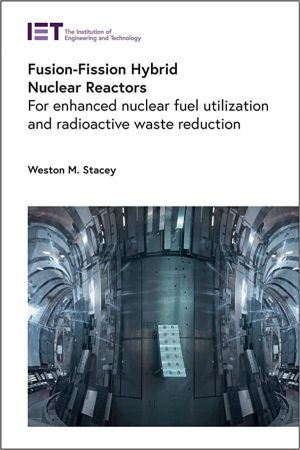English | 2022 | ISBN: 1839536519, 978-1839536519 | 296 pages | True PDF | 22.38 MB
Nuclear energy is contributing to the long-term solution to stave off climate change. However, current nuclear fission technology accesses only about 1-3% of the nuclear energy content of natural uranium, which is inefficient, and also creates a radioactive waste disposal problem.
Combining nuclear fission technology with emerging nuclear fusion technology to create a fusion-fission hybrid would yield extra fusion neutrons to 1) convert much more of the uranium into fissionable material, which would increase efficient utilization of the nuclear fuel resource, and 2) significantly reduce (by fission) the most long-lived radioactive nuclear waste.
This book describes fusion-fission hybrid physics and technology. The first parts briefly review nuclear fission principles and describe design and safety of nuclear fission reactors; then the fundamentals of nuclear fusion and fusion reactor concepts are described, together with ongoing and future challenges and anticipated developments in this not-yet matured technology. Chapters cover the scientific basis of nuclear fission and the fission fuel cycle, advanced fission reactors, safety aspects, the scientific and technological basis of nuclear fusion power, future improvements expected, and then the fusion-fission hybrid (FFH) breeder and burner reactor concept principles, with illustrative FFH design concepts, safety analyses, and examples of the use of fusion neutrons for helping to achieve burning and breeding fission fuel cycles.
This concise work is essential reading for researchers and policy makers in nuclear energy research and engineering, including advanced students.
DOWNLOAD





 Reply With Quote
Reply With Quote
